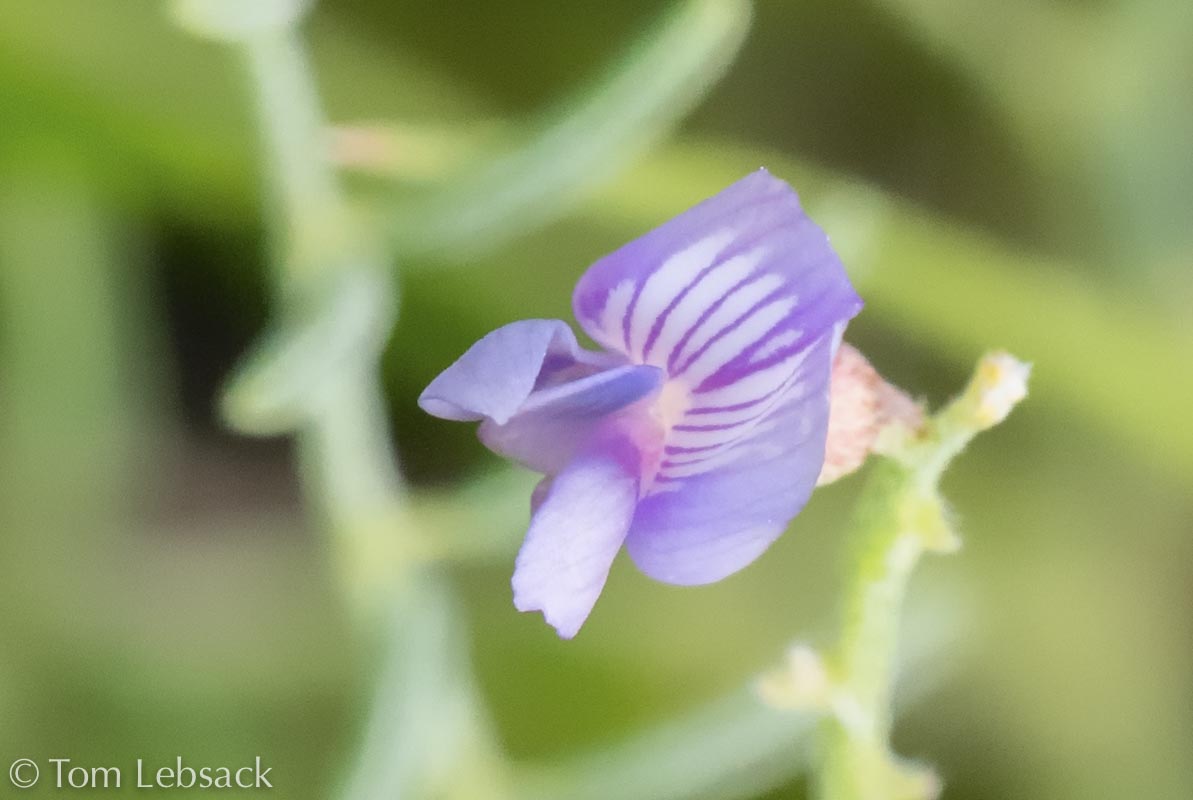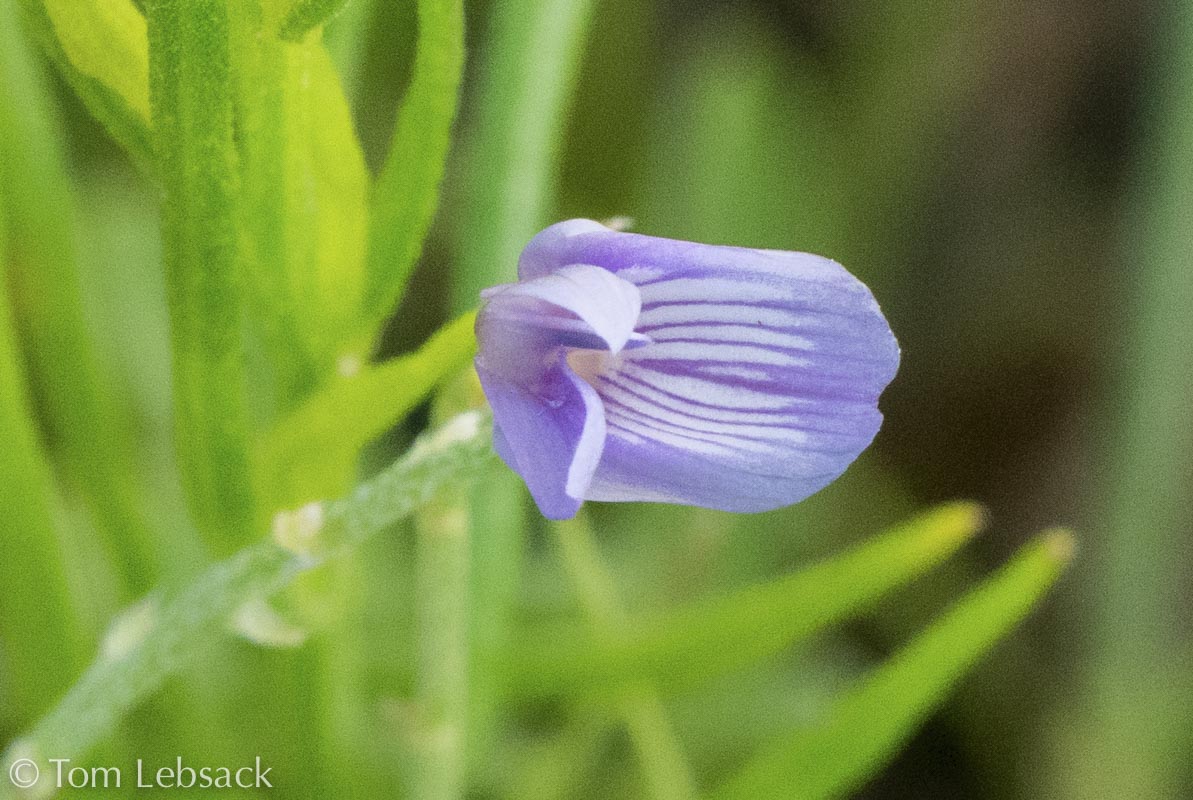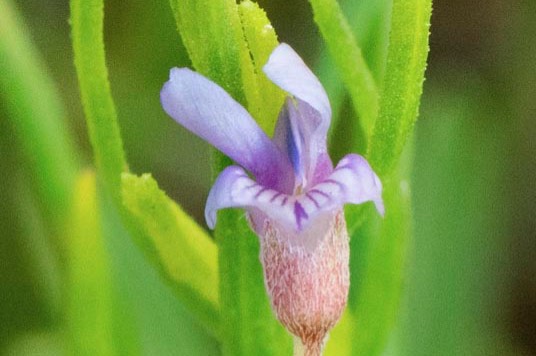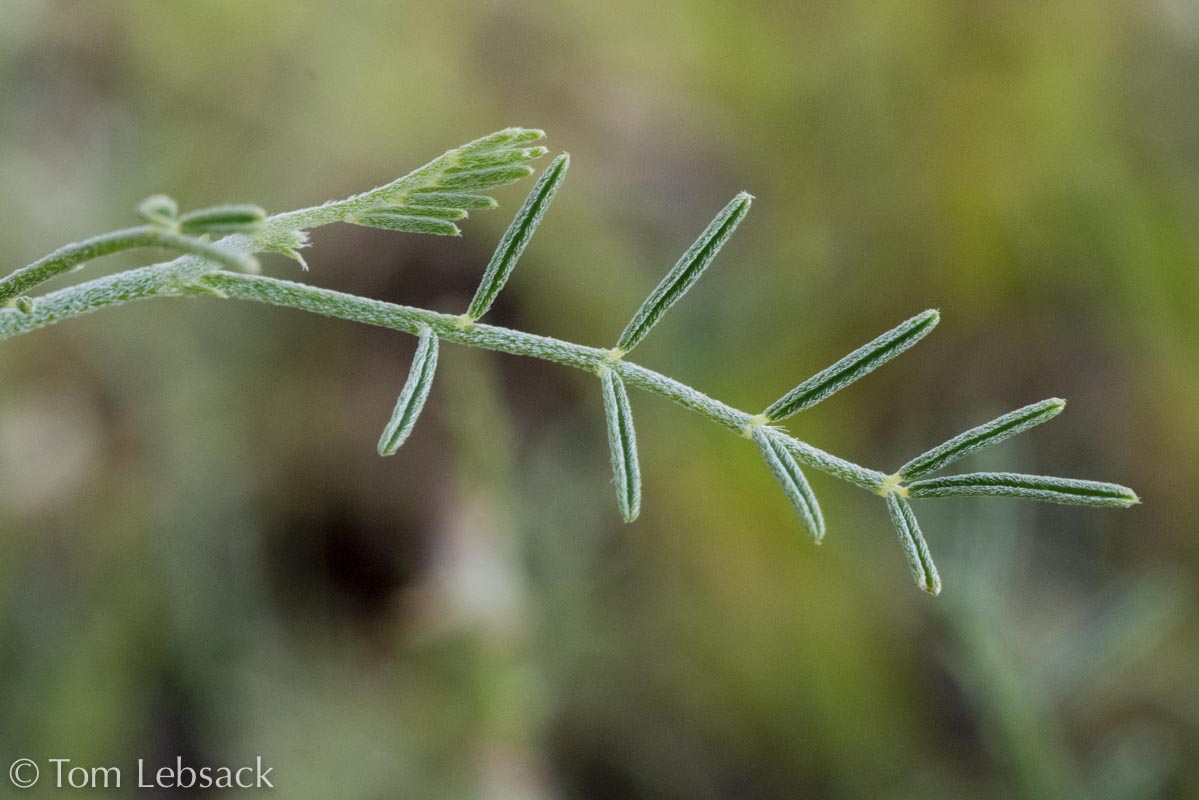Astragalus gracilis
(Slender Milkvetch)
| Scientific Name | Astragalus gracilis | USDA PLANTS Symbol | ASGR3 |
| Common Name | Slender Milkvetch | ITIS Taxonomic Serial No. | 25528 |
| Family | Fabaceae (Pea) | SEINet Reference |
Click Here |
| Description | Life zones and habitat: Plains and foothills (3500 to 6500 ft.); often calcareous soils on open prairies, wooded or brushy hillsides, ravines, and roadsides. Plant: Erect, ascending, or decumbent, 1 or more branched weak stems 6 to 16 inches long; stems covered with fine, short, appressed hairs. Leaves: Odd-pinnately-compound leaves 3/4 to 2-3/4 inches long with each blade divided into 9 to 17 narrowly-linear or linear-oblong widely separated leaflets, 1/4 to 3/4-inch long, less than 1/10 inch wide up to 3/8-inch long; upward-curled edges. Inflorescence: Loose spike-like racemes 2 to 8 inches long with 3 to 50 pea-like blossoms; corollas dark purple to pale pinkish or sometimes whitish with purple keel tips, fading to yellowish; banner often purple-veined. Bloom Period: May to July. References: "Flora of Colorado" by Jennifer Ackerfield, "Manual of the Vascular Plants of Texas" by Correll and Johnston and Kansas Wildflowers and Grasses. |
BONAP Distribution Map Map Color Key | Colorado Status: Native |
© Tom Lebsack 2025
Banner photo: Castilleja rhexifolia and a brewing storm over the San Juan Mountains
I try to provide accurate, up-to-date, and relevant information, but cannot guarantee the completeness or accuracy of any information presented on this website. I use authoritative references to insure high standards of accuracy and review and update the information frequently.



